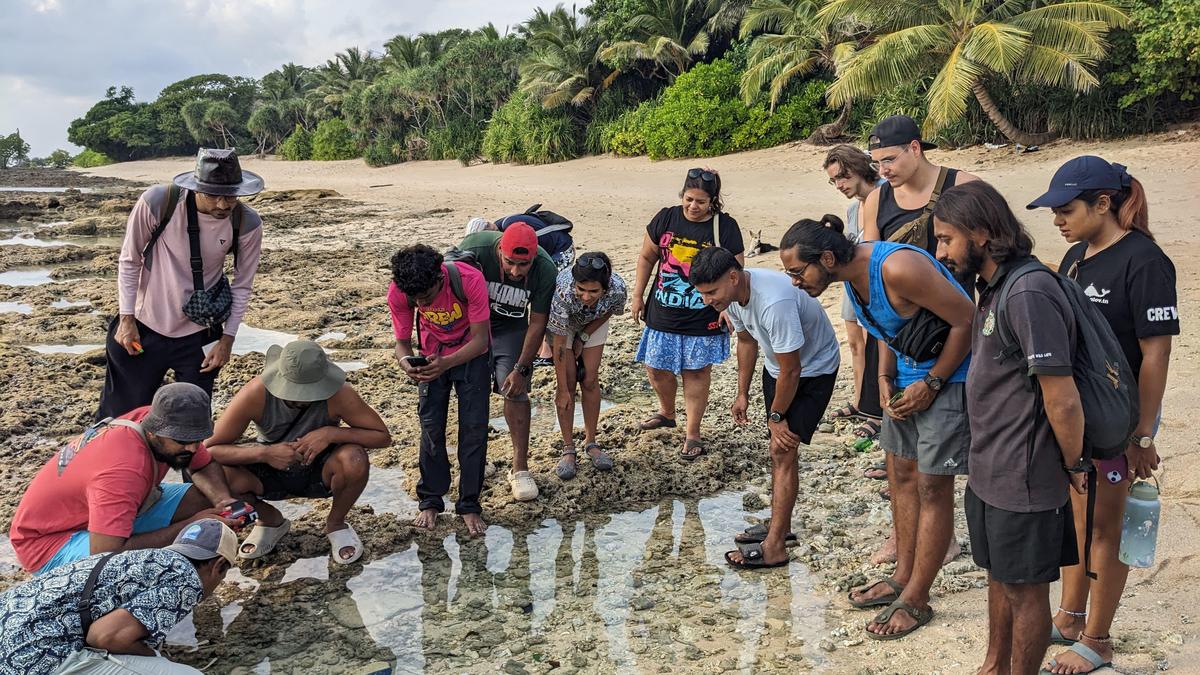
The first Intertidal Bioblitz uncovers marine wonders in India’s coasts
The Hindu
Intertidal Bioblitz uncovers marine wonders in Visakhapatnam, revealing new species and highlighting rich biodiversity along India's coast.
The intertidal pools of Rushikonda in Visakhapatnam was brimming with life that morning as the East Coast Conservation Team waded through the shallow waters, scanning the rocky crevices for marine wonders. Amid the sway of nudibranchs and sea grapes, Kusum Gorentla, an ECCT volunteer, spotted a delicate, ribbon-like object floating by. Its gentle undulations resembled the feathery arms of a crinoid, a feather star species often found clinging to submerged rocks.
However, as they examined it closely, they realised it was something far more intriguing — a flatworm. Further identification confirmed it as Pseudoceros bifascia, marking the first-ever record of this species from mainland India, expanding its known range and adding a new chapter to the marine biodiversity of the country’s eastern coastline.
Discovered only last year in Lakshadweep, this species’ presence along the Andhra Pradesh coast highlights the rich, yet largely undocumented, marine biodiversity of the region. This unexpected discovery was among the key findings of the recently-concluded Intertidal Bioblitz, a nationwide effort to document marine life across India’s coastal regions. The event, hosted jointly by the Coastal Conservation Foundation and East Coast Conservation Team, brought together researchers, citizen scientists, and conservationists from Mumbai, Andaman, Goa and Visakhapatnam, shedding light on the vibrant but often overlooked intertidal ecosystems.
This first nationwide initiative on intertidal species was done over a 10-day period and clocked in more than 3,600 observations and 514 species in iNaturalist app, a global science citizen tool. “The observations from Visakhapatnam have been very encouraging. In fact, there were 1,533 observations of 227 species done from Visakhapatnam alone. This will give a big boost to the marine life documentation of the region. The discovery of Pseudoceros bifascia at Rushikonda not only underscores the need for further exploration but it also reaffirms how much of India’s marine biodiversity is still waiting to be uncovered,” says Sri Chakra Pranav of ECCT. During the bioblitz, two undescribed species and more than 10 first records in Visakhapatnam and one first record in mainland India were reported.
As many as 57 people contributed in the Intertidal Bioblitz from Visakhapatnam with a majority of observations done by Chandrashekhar Durgasi, Deepu Visweswar, Pranav, Kusum and Samuel Prakash from Sea Trust.
Apart from the first record of Pseudoceros bifascia from mainland India, one more undescribed flatworm species was found, which resembled an electric flatworm. Deepu, a researcher in Andhra University and a member of ECCT, is focussing on these species.
“Night tidepooling sessions revealed a whole lot of biodiversity with sightings of butterfly fish, surgeon fish, three types of porcupine fish and a lot more beauties. School children who attended the walks witnessed a laced moray eel. When we photographed it, a juvenile angel fish was hiding behind it as well!” says Deepu.













